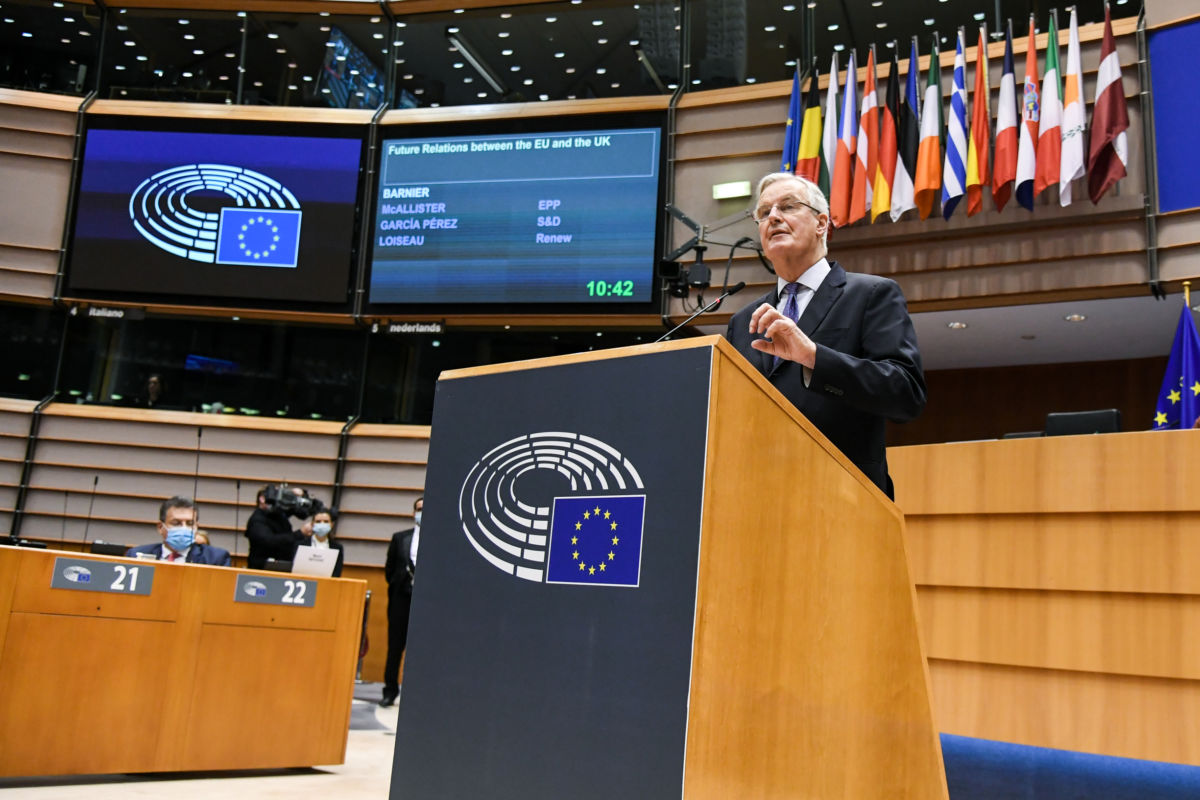A recent decision by the German Constitutional Court has opened up a rift at the heart of Europe’s common currency. The gist of this decision is that Germany’s central bank, the Bundesbank, must cease to participate in the European Central Bank’s bond-buying programme (the Public Sector Purchase Programme, or PSPP) unless the Court receives a satisfactory explanation within three months that the PSPP constitutes a proportionate measure, appropriate for mitigating threats to price stability.
To outsiders, this judgment is difficult to understand. The ECB has explained its decision in countless publications, in speeches by its Governing Council members and academic publications by its high-calibre research staff. Yet this was not enough for the German judges, who apparently read only ECB press releases and mainly relied on German economic expertise.
Their concerns stem from the arcane question of whether central bank bond buying constitutes monetary or fiscal policy. Economists know that all monetary policy has some fiscal implications and that by using an ‘unconventional’ monetary policy instrument, central banks are operating in a grey area between monetary and fiscal policy. When the Maastricht Treaty was signed in the early 1990s, the grey area was much narrower as financial markets were much smaller and inflation was the main problem. The European Union Treaty makes a clear distinction between these two policy areas and reserves monetary policy for the Union (the ECB), whereas general economic policy remains a purely national competence.
This attribution of competences also implies that the European Court should be competent on any issue concerning monetary policy (with economic policy reserved for national courts). But the key issue then becomes, who judges whether a certain action by the ECB is straying too far into the domain of fiscal policy and is thus illegal, the European Court or the national courts?
The German judges accepted, with some reservations, an earlier decision of the European Court that the PSPP was still on the monetary side of the grey area and was thus not illegal. They also argued, however, that they had the right not to accept decisions of the ECJ:
“where an interpretation of the Treaties is not comprehensible and must thus be considered arbitrary from an objective perspective” (Point two of the decision of the Bundesverfassungsgericht (BVG) – the German Federal Constitutional Court).
The German Court argues that it is apparent that the ECB failed to carry out a proper proportionality test, which would be required under EU rules and the German constitutional approach.
Disputes over the attribution of competences are of course frequent in all federations, especially those that change over time. A similar debate occurred in the US in the 1830s, when its own federal system was still evolving (younger then than the EU is today). How the crisis came about, and how it was resolved, yields interesting clues for how the present crisis might evolve.
The key issue sparking the crisis in the US back then was also economic. The crucial question, then as now, was whether a policy instrument intended for one aim could also be used in a way that favoured particular states or sectors at the expense of others.
In the US of the early 19th century the role of the federal government was quite limited. Its main economic competence was in the area of trade policy because tariffs represented the main source of revenue for the federal government, and this revenue was sorely needed to service the national debt, which was high again after the war of 1812.
In 1828 Congress decided to substantially increase tariffs, but not only with the aim of raising revenues. Northern manufacturers wanted protection from the industrial superpower of the day, Great Britain, especially for high tech products like textiles. The Southern States, which exported the raw material cotton but had no local textile industries, were understandably aggrieved. They argued that tariff policy had been misused for a different purpose, namely industrial policy, a domain that was reserved for the States. This point was made most forcefully in the South Carolina Exposition and Protest, which argued that the tariff of 1828 was unconstitutional because it favoured manufacturing over trade and agriculture.
This line of argument led to the critical issue of who would judge whether the constitution had been violated. Here again the reasoning is similar to that employed by the German judges:
“In fact, to divide power, and to give to one of the parties the exclusive right of judging of the portion allotted to each, is, in reality, not to divide it at all; and to reserve such exclusive right to the General Government (it matters not by what department to be exercised), is to convert it, in fact, into a great consolidated government, with unlimited powers, and to divest the States, in reality, of all their rights.”
The German judges used the same line of reasoning when they argued that the German Constitution could be undermined by stealth only if an EU institution (like the ECJ) could judge whether another EU institution (the ECB) was acting within the EU Treaty.
This legal-political doctrine of the ultimate right of a State not to apply a federal decision it considered unconstitutional became so predominant in South Carolina that in 1832 its legislature ordered State officials not to implement the tariff schedule and later declared the US tariff schedule null and void in its own territory. In a similar vein the BVG has called on the Bundesbank to stop participating in the bond-buying programme of the ECB if the German Court does not obtain a satisfactory explanation that this measure is proportional to the aim of achieving price stability.
The so-called Nullification crisis was resolved through a compromise because both sides realised that they had much to lose from outright conflict. The tariff schedule was slightly reduced, allowing the South Carolina legislature to declare victory – and get out of a conflict it could not win because no other State backed the extreme position taken by South Carolina. The federal government (and the Northern States) also recognised that that the South had a legitimate grievance and that opposition to the high tariff would grow unless the pressure was reduced.
The compromise to diffuse today’s legal conflict over monetary policy appears clear: a simple explanation of the Bundesbank that the bond-buying programme of the ECB was a proportional response to a threat to price stability should be sufficient for the German Constitutional Court. But some are arguing that there are principles at stake, namely the superiority of the European Court of Justice and the independence of the central bank. This is why, according to press reports, the Commission is considering starting an ECJ procedure against Germany for infringing the EU Treaty.
In a conflict between two constitutional courts, one cannot really appeal to a higher authority for a clear-cut decision. It might thus be useful to look at this issue from a wider social science perspective, specifically, dissent in large and complex organisations.
The economist Albert O. Hirschman wrote about the choice between exit (leaving an organisation) and voice (protest from within). The decision of the BVG should be considered as voice, as protest, but with the implicit threat of exit. However, Hirschman also emphasised that the choice between exit and voice cannot be understood without a third element, namely loyalty.
The coming months will test the loyalty of Germany’s political system to the European project. Fortunately, it seems that most German leaders value the EU more highly than a minor quibble of their own Constitutional Court with what the European Central Bank is doing. Much like South Carolina in the 1830s, the German Court might have scored an own goal by starting a conflict it cannot win.
An earlier version of this article was published by Project Syndicate.






































